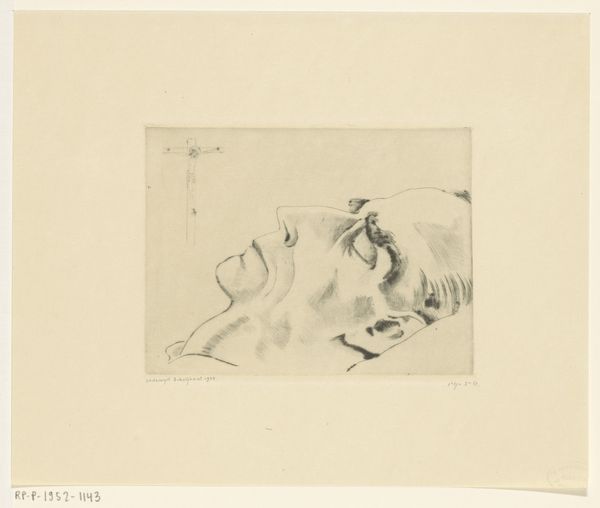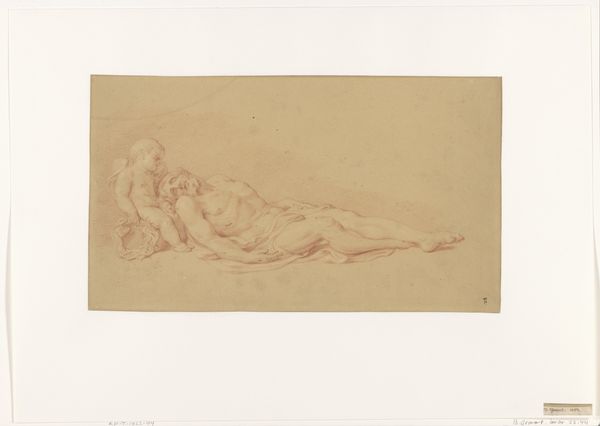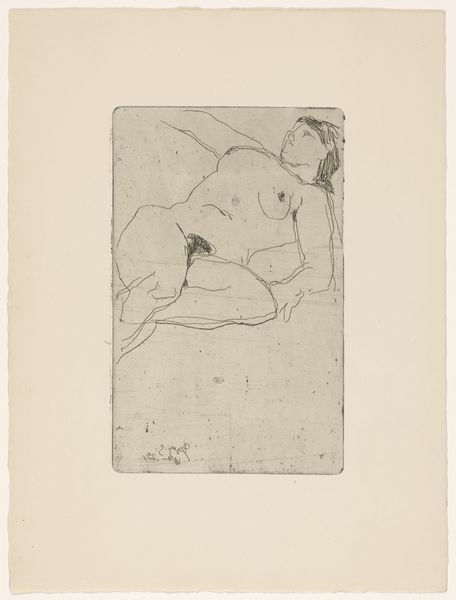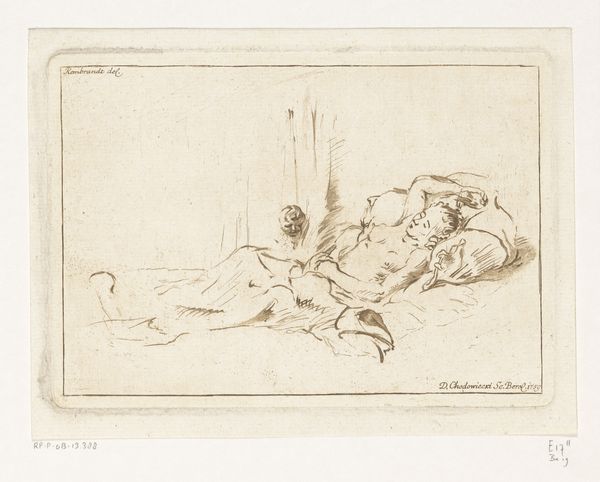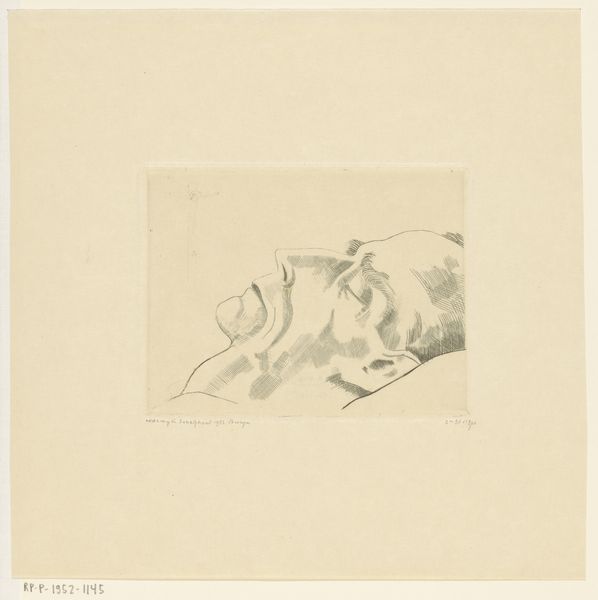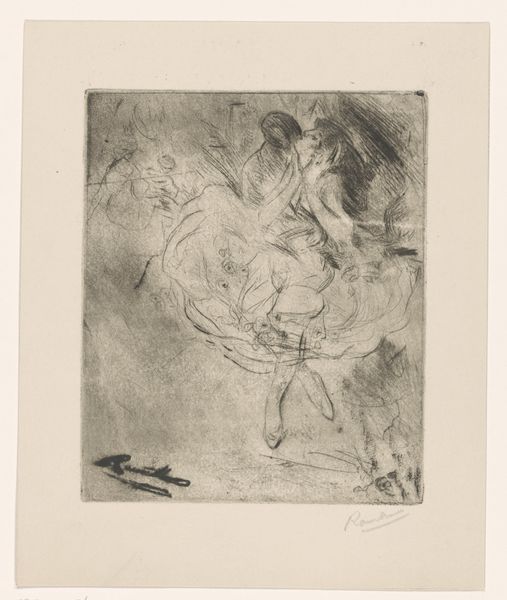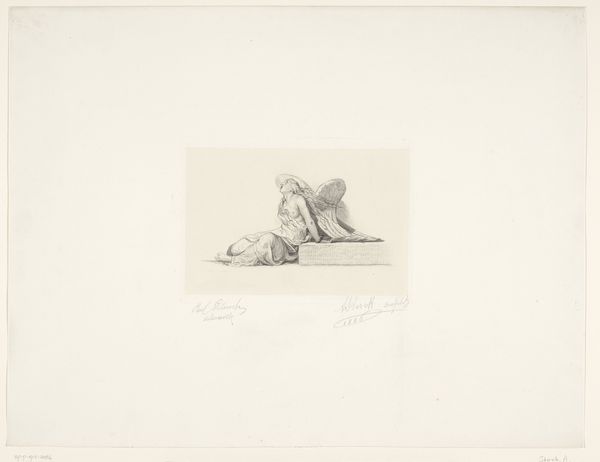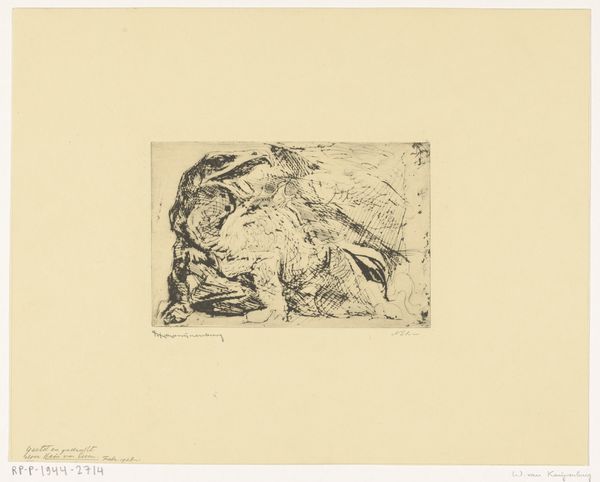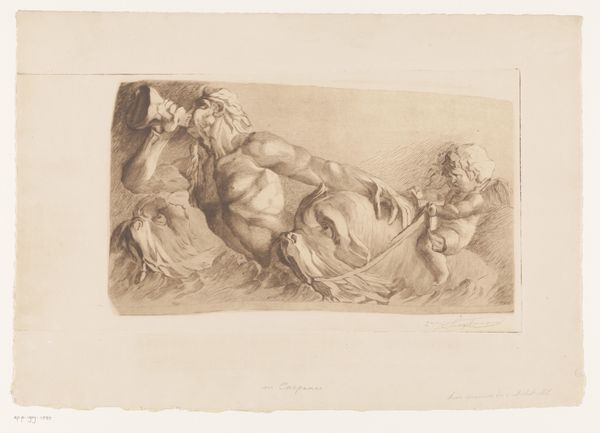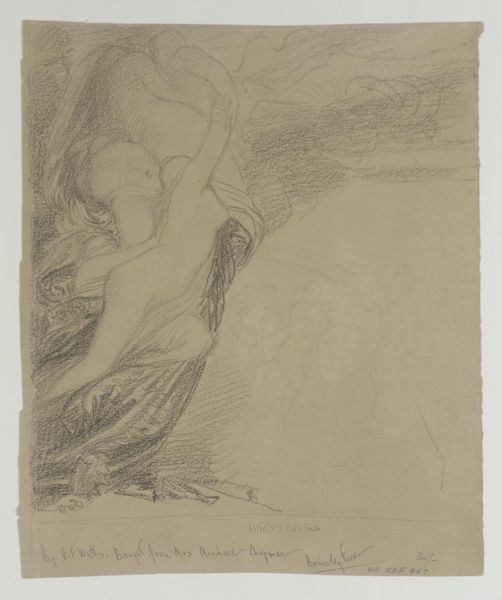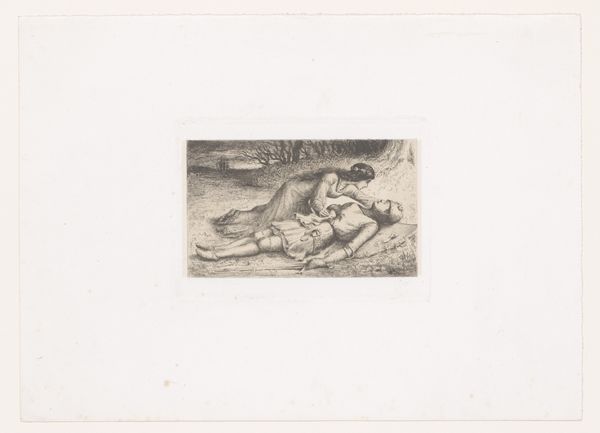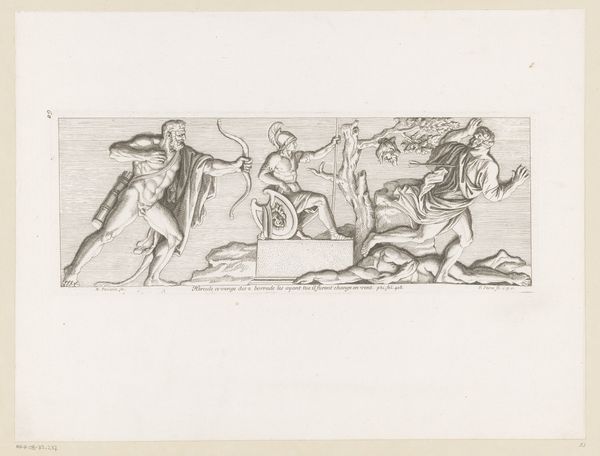
drawing, pencil, graphite
#
pencil drawn
#
drawing
#
pencil sketch
#
pencil drawing
#
pencil
#
graphite
#
academic-art
#
nude
Dimensions: height 110 mm, width 243 mm
Copyright: Rijks Museum: Open Domain
Curator: Let’s discuss “Three Bodies of Dead Men,” a graphite drawing by Auguste Danse, created in 1879. You can find it here at the Rijksmuseum. What are your first thoughts? Editor: Morbidly fascinating. The composition is startling, the bodies intertwined in a strangely intimate tableau. There's something undeniably human in their lifelessness that's unsettling. Like a modern day danse macabre sketched out in academic style. Curator: Academic, certainly. Danse likely intended this as a study of the male nude, fitting within the 19th-century art world's emphasis on anatomy and classical forms. These figures, while dead, are presented with careful attention to muscular detail. Editor: Right, there’s an almost clinical quality to the observation of death that's jarring. It’s not a glorification, but an intense focus on form. Death robbed of its drama but captured as mere flesh. Curator: Indeed. Consider the context. Academic art of this era aimed for objective representation, almost scientific in its precision. Death, however gruesome, became another subject for detached study. Think of it within a broader social frame too—public executions and medical dissections were part of the societal spectacle and study, this work being a studio distillation of that morbid public curiosity. Editor: A distillation that somehow makes it rawer! What really sticks with me is the vulnerability, despite their pose. It's death stripped bare, confronting us with our shared fate. Did viewers back then connect these studies with, say, mortality amidst cholera outbreaks or conflict deaths? Curator: The symbolism could resonate with anxieties about mortality certainly—yet these types of anatomical studies served a training purpose more than prompting outright public reflection on societal woes. Their setting in academic studios shaped their consumption. Though a potent piece today for its unvarnished subject, remember that the artist's environment can greatly skew reading. Editor: True enough. And to look beyond such heavy takes, the beauty in the pencil work also deserves highlighting. The subtlety of the shading gives texture to what could be otherwise unbearable, allowing engagement rather than instant rejection. A kind of seductive creepiness. Curator: Yes. A skillful display that underscores the complexities inherent to portraying something as definitive as death. Editor: Agreed. It definitely haunts you, and gets you pondering life, mortality, and even art-making—no matter the historical motives behind its production! Curator: A stark reminder of life’s transience, indeed.
Comments
No comments
Be the first to comment and join the conversation on the ultimate creative platform.
